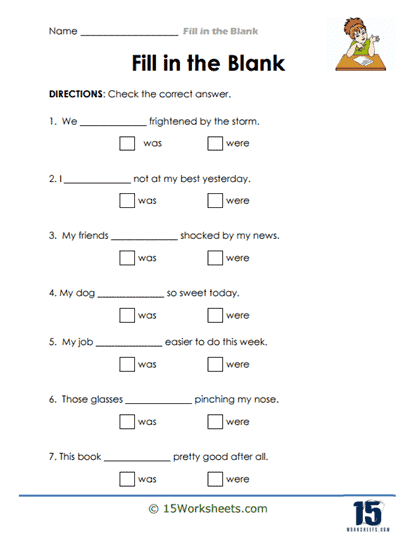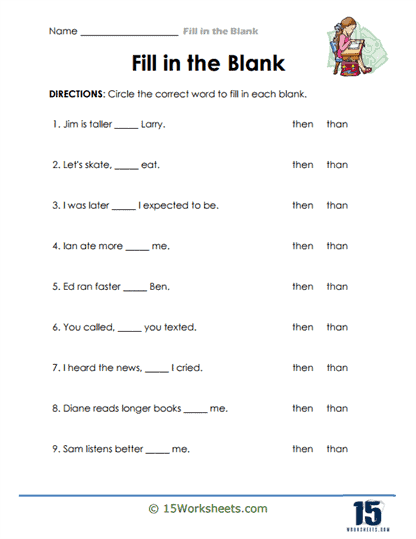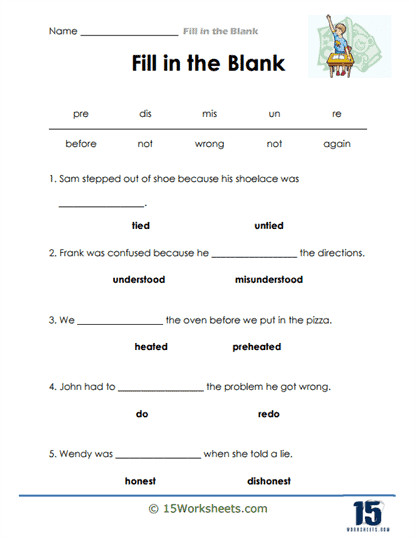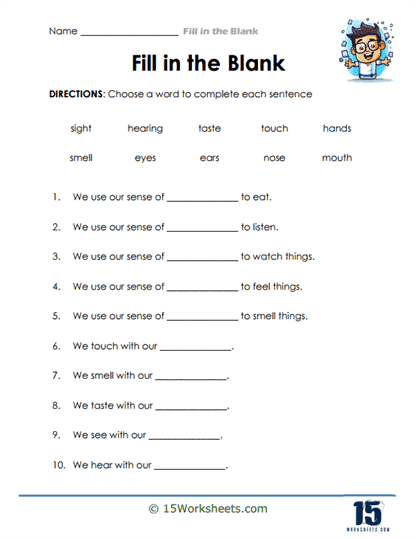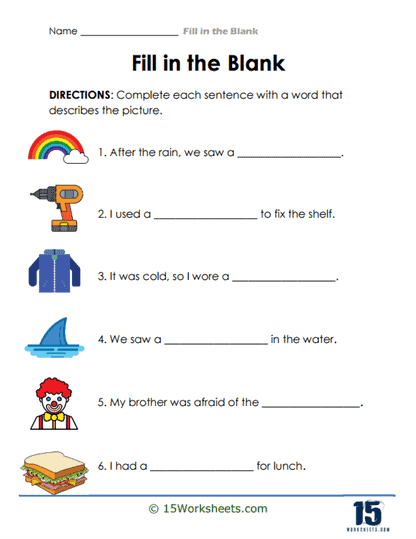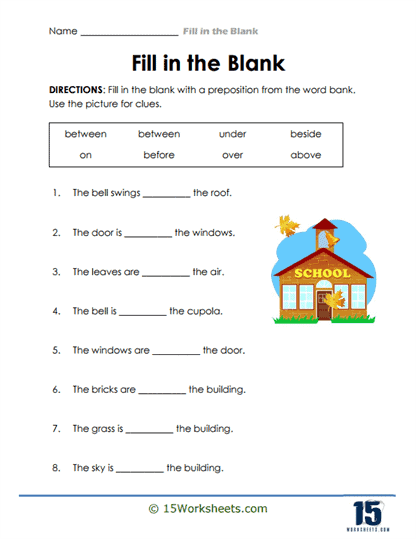Fill in the Blank Worksheets
About These 15 Worksheets
Language learning is an intricate process that involves absorbing vast amounts of information and skill sets. To navigate this multifaceted journey, educators often employ a myriad of tools and strategies. Among the most versatile and widely-used tools in this context are the “Fill in the Blank” worksheets. These worksheets, while simple in design, are potent instruments in enhancing language comprehension and grammar skills.
As the name suggests, “Fill in the Blank” worksheets consist of sentences or paragraphs with missing words or phrases. The student’s task is to supply the absent information. The blank spaces could represent nouns, verbs, adjectives, adverbs, prepositions, or any other element of the language. Depending on the objective of the exercise, the missing words can range from being very specific (like a particular verb tense) to open-ended (like any suitable adjective).
Types of Exercises You Will Find
Vocabulary Development – These blanks require students to insert the appropriate vocabulary word. They might be given a word bank or asked to choose words from memory.
Grammar Proficiency – Blanks target specific grammar components like verb tenses (“I ____ to the store”), articles (“She is ____ best student”), or prepositions (“The cat is _____ the table”).
Reading Comprehension – Longer passages with multiple blanks can gauge a student’s understanding of the text. The missing words or phrases often require an understanding of context, theme, or character motivations.
Synonyms and Antonyms – Students might need to fill in blanks with words that have similar or opposite meanings to a provided word.
Phrasal Verbs or Idioms – These exercises might focus on commonly used phrases or idiomatic expressions. For example, “He decided to _____ out” with the answer being “back.”
Punctuation and Capitalization – Here, the blanks can indicate where punctuation should be, or students might be tasked with identifying where capital letters are needed.
Language Function – These blanks can check the student’s ability to use language functionally. For instance, asking them to complete a dialogue with appropriate questions and responses.
How These Worksheets Enhance Language Skills
Active Engagement – These worksheets require students to actively participate. Instead of merely identifying or choosing from given options, they must produce an answer, which can deepen understanding.
Contextual Learning – Language isn’t just about isolated words or rules; it’s about how these elements function within larger contexts. “Fill in the Blank” exercises compel students to consider surrounding words and ideas, promoting a more holistic learning approach.
Immediate Feedback – Whether self-checked, peer-reviewed, or teacher-evaluated, these worksheets allow for prompt feedback. Students can quickly ascertain what they’ve mastered and where they need further study.
Customizability – One of the biggest strengths of these worksheets is adaptability. They can be tailored to any difficulty level, making them suitable for diverse learners, from beginners to advanced.
Reinforcing Grammar Rules – By strategically placing blanks where specific grammar rules apply, students are indirectly yet consistently reminded of these rules, fostering retention.
Enhancing Memory – The act of recalling information and filling in blanks can bolster memory retention. Active recall has been shown to strengthen neural pathways, making future recall easier.
Building Confidence – For students, there’s a certain satisfaction in successfully completing these worksheets. Each filled blank represents a small victory, building their confidence in language usage.









